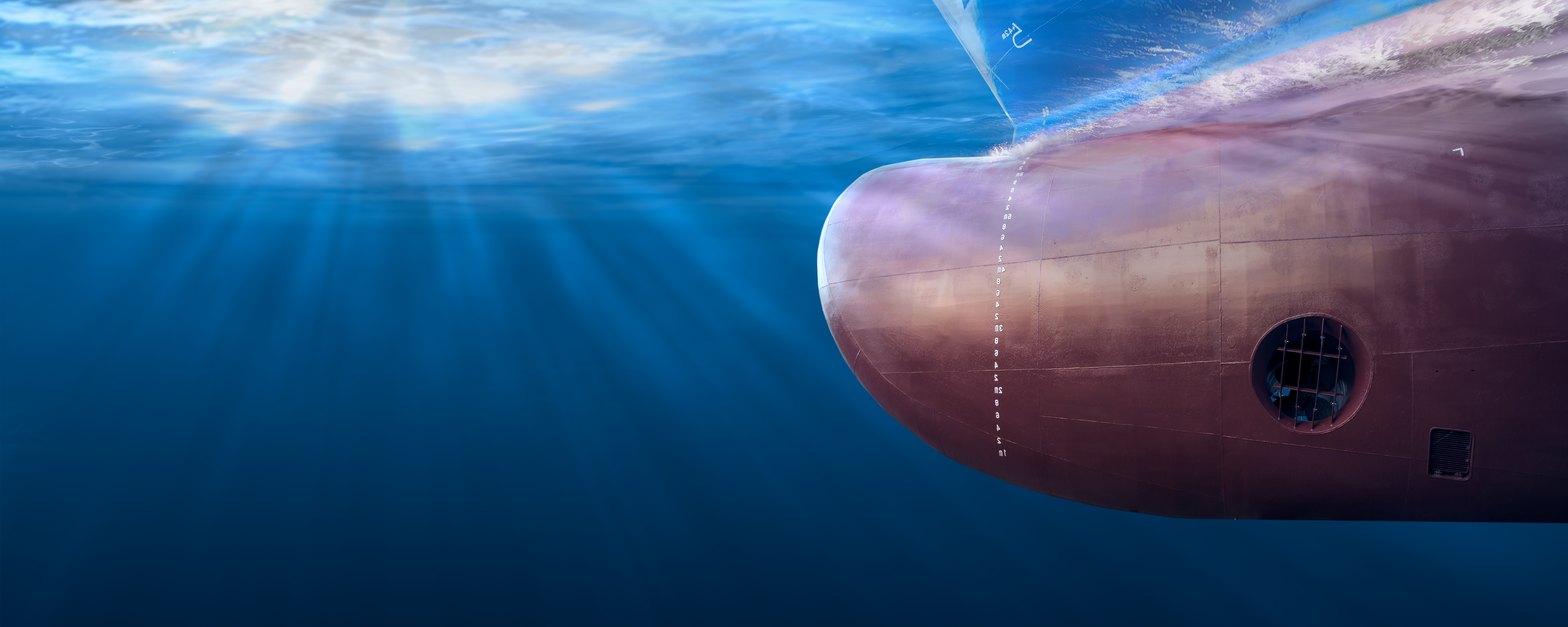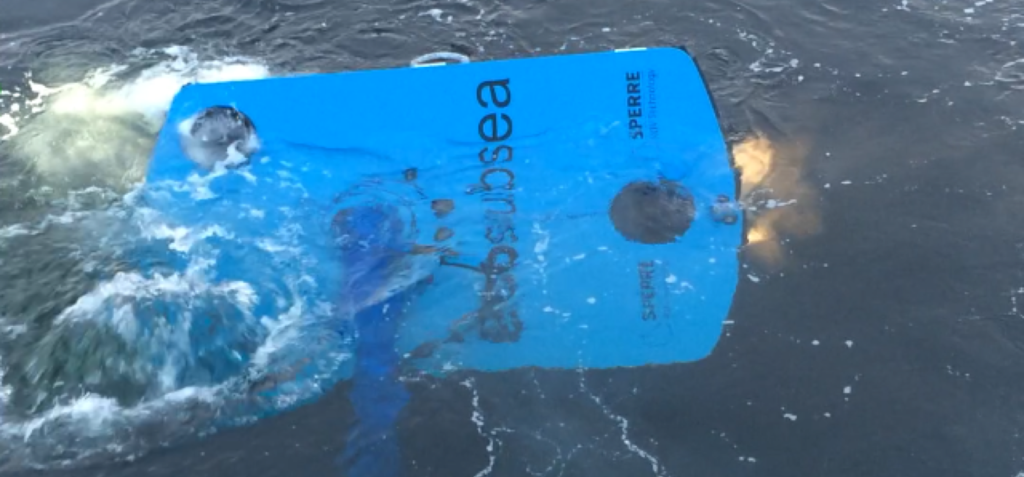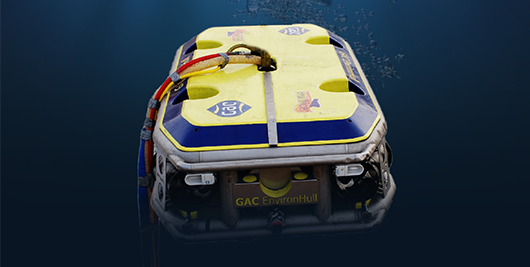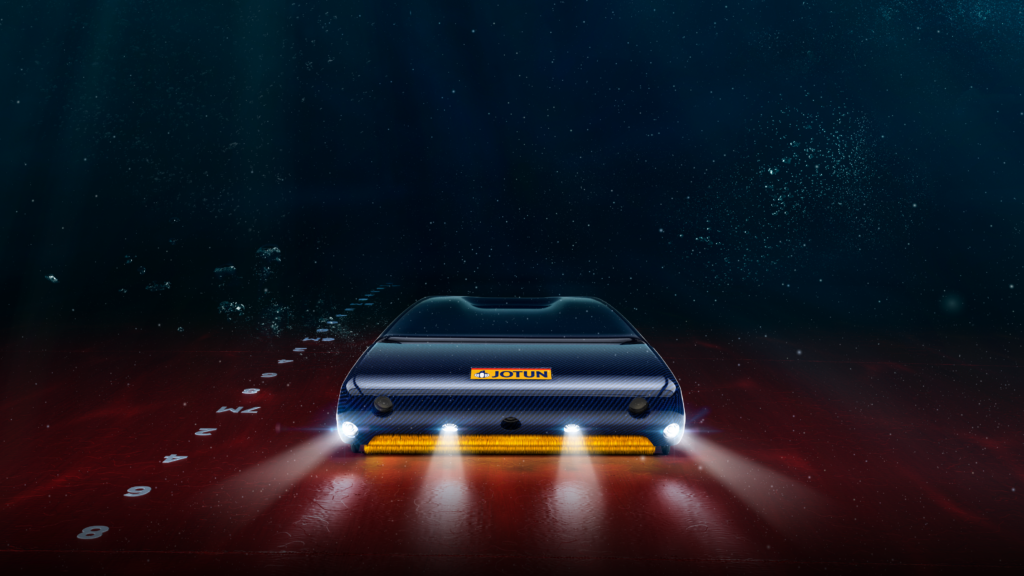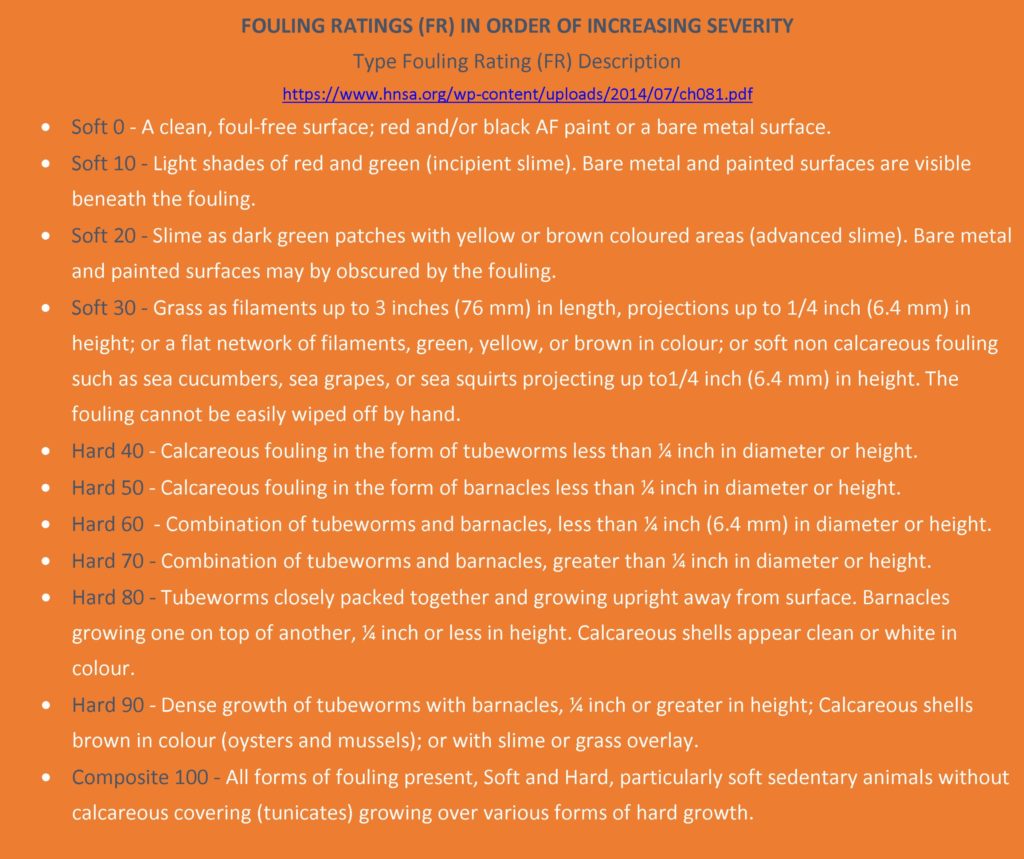Hull coating technology is getting highly sophisticated, while it is already extremely competitive. Now Norway’s Jotun has taken a leap into new technology with a cleaning system to add to its predictive tools and complex hull coatings.
It’s not just the new ingredients that are changing in the coatings themselves, but the technology to help. Hull cleaning – using divers or autonomous hull crawling robots – is not new, but now Jotun, the Norwegian coatings and paints maker, has taken the highly competitive market to a new level when it revealed its hull skater last month.
At first glance the technology looks like it is a direct competitor to companies like EcoSubsea and GAC owned Hullwiper, that sell robotic diverless hull cleaning services with the ability to retrieve most or nearly all the scrapped off detritus.
But Geir Axel Oftedahl, Jotun’s director of marine business development, says these are complementary services, not direct competitors as the hull skater is about fouling prevention, not fouling removal. And unlike these business models the hullskater service is rented to a shipowner for a specific vessel, and remains onboard; a vessel which would already have a Jotun hull coating designed specially for use with the hull skater.
This new technology has taken at least two years to develop, with prototype testing onboard a Wallenius Wilhelmsen car carrier on ocean going trade, with a lot of collaboration with the ports says Oftedahl, as the hullskater has not been designed to clean the hull of biofouling and collect any detritus.
And this is where one of the big differences with other hull crawling robot systems can be seen. There is no attempt to retrieve anything that the Jotun invention may take off the hull, because it is not designed to take anything off the hull. This is about preventing things getting dirty rather than cleaning up one they are.
Oftedahl calls it pre-foul cleaning where the hull is inspected – the hull skater has video cameras and will be operated remotely by Jotun staff – and cleaned of early stage slime. The cleaning only happens if there is no hard fouling found. It is all part of a biofouling management plan.
Hull biofouling: It’s not all the same
There is an accepted level of rating for biofouling from the US Navy. It has FR scale going from 0 to 100, where soft 0 is an exceptionally clean hull, hard is rated from 40 to 90, and with a composite 100 where just about everything is to be found on a hull.
Oftedahl says that through its work with the ports and harbour authorities as it developed the skater, its system will be set to clean up to FR Soft 20 where there may be signs of slime, but no other growth.
Robotic trinity: ECOSubsea, Hullwiper, HullSkater
He also points to one of the toughest countries with biofouling regulations, New Zealand, which has frequently made the new for turning away biofouled vessels from its waters if they do not meet its standards.
The Hull skater is not about cleaning biofouling he says, it is about prevention of the growth while making sure that when it surveys the hull and does a clean, it also does not wear off any of the coating which could lead to biocides and metals falling into the water.
The skater is designed around the specific coating the company has created for this system and the coating for the skater, he says.
About three years ago Jotun began selling a hull condition prediction service, where it used global data and vessel tracking information to determine the risks of a particular vessel’s hull being fouled. Algorithms can predict when a specific hip may need inspection based on its coating, voyage patterns and idling times, says Oftedahl.
Jotun’s Hullskater takes this one step further and can be deployed from a ship and a hull inspection can be performed when the vessel is either at anchor or alongside in a suitable harbour.
An inspection will reveal the need for a clean, but also record the condition of the hull for the port authorities if they ask for it, and determine if a more robust clean than that which the hull skater can perform is needed – this is when divers or another cleaning system where the detritus can be collected as it is taken off the hull.
Clearly the robot system and associated dedicated hull coating are not for every shipowner and every ship.
The service (the skaters are not for sale) comes with the predictive tools Jotun has already had available for a couple of years. The skaters will not be operated by the ships crew, though one crew member is expected to take the unit out of its dedicated housing and place it on the launch ramp.
Nor does the system require data bandwidth from the ships own systems, being a partnership with a telcom company that is being taken care of. The hull skater is operated remotely, video captured remotely and the only connection with the ship is the umbilical, although the hall skater is self-powered.
There is a recovery winch as part of the set up says Oftedahl, but in an emergency the remote operator can release the system from the ships hulls(it uses magnets) and it can sit on the seabed until it can be recovered by divers.























